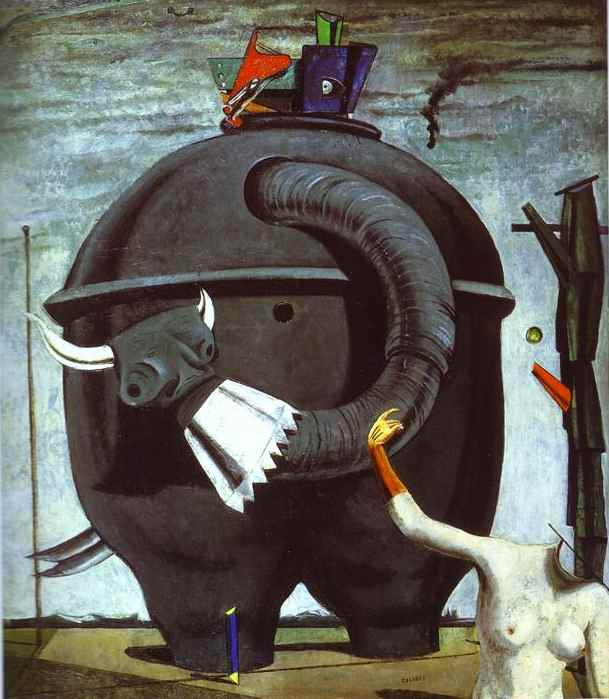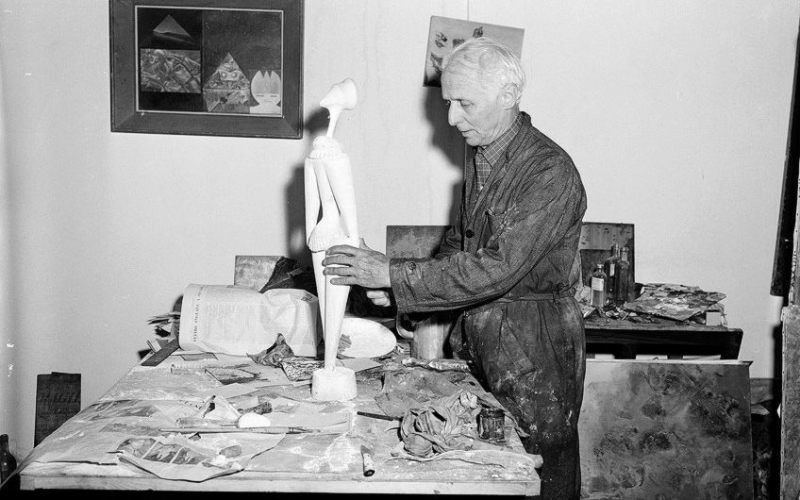The Elephant Celebes
German Dada artist Max Ernst (191–1976), who is regarded as one of the founders of the Surrealist art movement, created a painting titled The Elephant Celebes. It’s regarded to be one of the earliest pure Surrealist paintings ever created, 3 years before the Surrealist Manifesto was established.
Giorgio de Chirico (1888-1978), an Italian painter who started the "Scuola Metafisica" art movement just before World War I started, had a significant impact on the early Surrealists. This piece has a massive mechanical elephant as its focal element and borrows the Dada movement's collage-like aesthetic.
This artwork was inspired by a photograph of a Sudanese maize storage bin, which Ernst transformed into a mechanical creature resembling an elephant. The headless naked woman wearing a surgical glove displays disrespect for the idealized human form found in realist art. Other intriguing aspects in the artwork include a trail of smoke on the right and two fish that appear to be "flying" in the left corner. The Elephant Celebes is based on Sigmund Freud's Dream Theory and features strange pairings of dissimilar objects. The first line of a juvenile German rhyme with suggestive sexual overtones, "The elephant from Celebes has sticky, yellow bottom grease", serves as the painting's title. One of the early classics of Surrealist art is The Elephant Celebes.
Date created: 1921
Dimensions: 125.4 × 107.9 centimeters (49.4 × 42.5 inches)
Location: Tate Modern, London, United Kingdom












